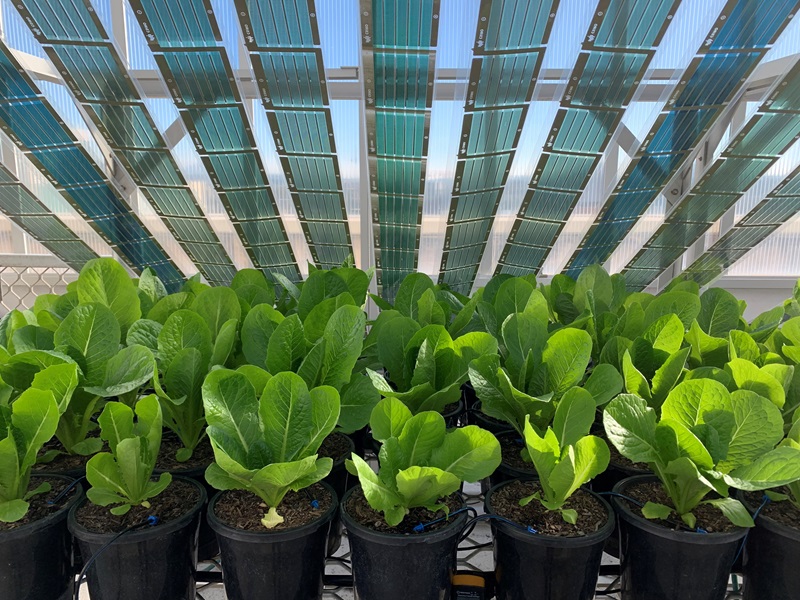Australia’s chief science agency, the CSIRO, is now running a program to test the impacts of installing lightweight, semi-transparent, printed solar films at its crop greenhouses across the nation.
The program is the result of a ‘Shark Tank’-style competition which the CSIRO ran internally to gather ideas from its own researchers on how to reach its target of net zero emissions across its national property portfolio by 2030.

Image: CSIRO
The winning idea, which is now being developed using internal funding, will see researchers test solar films over the next 18 months at glasshouses at the University of Queensland St Lucia site in Brisbane. The project is expected to conclude in early 2024.
The first solar films at St Lucia greenhouses have now been installed, the CSIRO said, and from now until October, researchers in the CSIRO’s Agriculture and Food team will be working with the Manufacturing team to monitor plant growth and solar cell performance. The solar films use the CSIRO’s existing solar cell technology.

Image: CSIRO
The teams want to assess the hypothesis that the solar films could enhance growth conditions through the manipulation of transmitted light waves.
This is not a new concept to the CSIRO, which has been involved in a joint project between itself, the University of New South Wales (UNSW) and Australian solar manufacturer, Tindo Solar. Launched in 2022, that project is seeking to develop specific semi-transparent agrivoltaic modules to be used in crop farming and greenhouses.
At the time, the project lead and UNSW Associate Professor, Ziv Hameiri, told pv magazine Australia the CSIRO’s Agriculture department had long been investigating the light conditions required by certain crops to grow the best produce.
Coming back to the internal CSIRO program, it said the findings from the St Lucia installation will be used to develop solar cells which are “optimised for plant growth,” with further testing in the field to follow.
A final report will look at plant growth and solar cell performance and calculate the potential emissions reduction if the technology were to be deployed in glasshouses across CSIRO, it said.

Image: CSIRO
The team includes researchers Anthony Chesman, Mei Gao and Doojin Vak from the CSIRO’s Manufacturing division and Cathryn O’Sullivan from Agriculture and Food.
Implications of agrivoltaics
A number of solar projects in Australia and the rest of the world have deployed traditional solar modules on animal grazing farms. Outcomes from the projects have proven promising, with the CSIRO classing the practice “well established.”
“However, the use of PV technologies on closed cropping areas, such as glasshouses, is less well developed,” the CSIRO noted. “Meanwhile, the effect of shading on different crop species is yet to be fully understood.”
Understanding the relationship, the CSIRO says, is pivotal as the globe’s changing climate will see droughts and heatwaves become more frequent. Closed cropping areas like green- or glasshouses shield crops from tumultuous weather by controlling temperature, humidity and light levels, with the CSIRO concluding their use will become evermore important.
This content is protected by copyright and may not be reused. If you want to cooperate with us and would like to reuse some of our content, please contact: editors@pv-magazine.com.









By submitting this form you agree to pv magazine using your data for the purposes of publishing your comment.
Your personal data will only be disclosed or otherwise transmitted to third parties for the purposes of spam filtering or if this is necessary for technical maintenance of the website. Any other transfer to third parties will not take place unless this is justified on the basis of applicable data protection regulations or if pv magazine is legally obliged to do so.
You may revoke this consent at any time with effect for the future, in which case your personal data will be deleted immediately. Otherwise, your data will be deleted if pv magazine has processed your request or the purpose of data storage is fulfilled.
Further information on data privacy can be found in our Data Protection Policy.